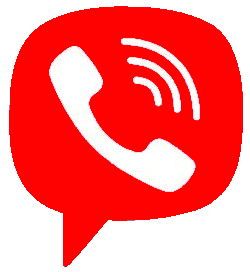As the skin ages, it begins to lose its elasticity resulting in frown lines, wrinkling across the forehead, and an increasing heaviness in the eyebrows. Forehead lifts are an option if you have a sagging brow or deep furrows between the eyes. This procedure is usually done between age forty and sixty-five but can be performed at an earlier age. A forehead or brow lift tightens loose skin and removes the excess, forehead wrinkling and drooping brows are modified. When necessary, part of the muscle that causes vertical frown lines between the brows is also removed.
Although a brow lift may make you look younger, it cannot curb the ageing process. This procedure is often performed in conjunction with a facelift, which eliminates sagging in the jowls and neck. Eyelid surgery may also be performed at the same time but, sometimes, patients who believe they need upper-eyelid surgery find that a forehead lift can achieve the desired results.
It is important to note that the texture of the skin is not changed by a forehead lift. Although the skin may be tightened, scars, age spots, fine lines and creases will soon return to their original texture. In such cases, skin treatments like laser skin resurfacing, dermabrasion and chemical peels improve the texture of the skin and are frequently used in combination with a forehead lift. Finally, injectable fillers such as collagen can plump forehead lines and BOTOX® injections can retard the formation of wrinkles.
What happens during the procedure?
Most forehead lifts are performed under local anesthesia, combined with a sedative to make you drowsy. This keeps you in a twilight state, you’ll be awake but relaxed, and although you may feel some tugging and mild discomfort, your forehead will be insensitive to pain. Some surgeons, however, prefer to use general anesthesia.
There are two techniques used for forehead lifts, the coronal brow lift and the endoscopic forehead lift, both of which take about an hour or two.
To begin with, your hair is tied back with rubber bands on either side of your head where the incision will be made. The head does not need to be shaved, but hair growing directly in front of the incision line may need to be trimmed.
For a coronal brow lift the incision is made slightly behind the natural hairline, running from ear to ear across the top of the head, in the same place that a hair band or headset would sit. The incision is usually made well behind the hairline so that the scar is visible. If your hairline is high or receding, however, the incision may be placed just at the hairline, so as not to add any more height to the forehead. In patients who are bald or losing hair, a mid-scalp incision that follows the natural pattern of the skull bones may be recommended. Wearing your hair down on your forehead camouflages the scars so that they are relatively inconspicuous. Special care is taken for concealing the scar in male patients, as male hairstyles do not necessarily cover the scars.
After the incision is made, the skin of the forehead is lifted away from the underlying tissue so that it can be removed and the muscles of the forehead can be reduced or released. The eyebrows may also be elevated and excess skin at the incision point is trimmed away. The incision is then closed with stitches or clips. Your face and hair is be washed to prevent irritation and the rubber bands holding the hair are removed. Some surgeons do not use any dressings, while others choose to cover the incision with gauze padding and wrap the head in an elastic bandage.
The endoscopic forehead lift typically requires the same preparation steps as the coronal browlift procedure. This technique leaves minimal scars and has a shorter recovery period. Rather than making one long coronal incision, however, your surgeon will make between three to five scalp incisions of less than an inch in length. An endoscope, a small wand with a camera on the end connected to a monitor, is inserted through one of the incisions. The endoscope allows the surgeon to have a clear view of the muscles and tissues beneath the skin. Another instrument is then inserted through a different incision, the forehead skin is lifted and the muscles and underlying tissues are removed or released. The eyebrows may also be lifted and secured into their higher position by sutures beneath the surface of the skin or by temporary fixation screws placed behind the hairline. Finally, the incisions are closed with stitches or clips and the hair and forehead are washed. Again, depending on your surgeon’s individual preference, gauze and an elastic bandage may also be used.
Are there risks or potential side effects?
As with all surgeries, there is always a possibility of complications following a forehead lift, including infection, bleeding, a reaction to the anesthesia, hematoma, seroma, nerve damage and the occurrence of asymmetries or irregularities. Be sure to ask your surgeon about all of the risks associated with the procedure you are considering before you make any decision.
There is a remote possibility that the nerves that control eyebrow movement may be injured on one or both sides, which results in an inability to raise the eyebrows or wrinkle the forehead. Additional surgery may be required to correct the problem.
Another potential complication is the formation of a broad scar, which may be require another surgery to remove the wide scar tissue and create a new, thinner scar.
The loss of sensation along or just beyond the incision line is common, especially with the coronal browlift and is usually temporary, but may be permanent in some patients. Also, some patients may experience hair loss along the edges of the scar.
Should a complication arise during an endoscopic forehead lift, your surgeon may abandon this technique and switch to the coronal procedure, which will result in a more extensive scar and a longer recovery period. Such complications are estimated to occur in less than 1% of all endoscopy procedures.
Certain medical conditions could cause problems during or after the procedure, such as uncontrolled high blood pressure, blood-clotting problems, or the tendency to develop large scars. Make sure to tell your surgeon if you have had previous facial surgery, if you smoke. Smoking can increase the risks of this procedure because nicotine constricts the blood vessels, decreases blood flow to tissues and greatly increases the chance of scarring. Some patients who smoke can actually lose a portion of skin due to decreased oxygen flow into the skin caused by nicotine and decreased skin oxygen levels caused by carbon monoxide can cause the skin to die. These risks are significantly reduced if you stop smoking at least two weeks before surgery and wait until you are completely healed before starting again. Poor healing of the skin may also occur in people who have very thin skin.
What to expect post-procedure?
In general, the post-operative experiences for acoronal brow lift are quite different from a lift performed endoscopically. The amount of pain experienced varies from person to person and depends on the method used and the extent of the procedure.
Regardless of the technique, keep your head elevated, above the level of your heart and apply cold compresses or small ice packs to reduce swelling and relieve discomfort. Many patients use a water-tight plastic sandwich bag filled with an ounce of frozen berries or peas. You will be able to shower and shampoo your hair within a couple of days or when the bandage is removed.
Patients who have had a coronal lift may experience some numbness and temporary discomfort around the incision. Your surgeon will prescribe medication to alleviate any pain. Those patients who are prone to headaches may be treated with an additional longer-acting local anesthesia during surgery as a preventive measure.
The extent of the post-operative swelling and bruising is dependent on whether you tend to bruise or swell easily. The amount you can expect varies for each individual but past surgeries or injuries should be a good indication. Swelling may also affect the cheeks and eyes but should begin to disappear in a week or so.
As the nerves heal, the numbness of the scalp will give way to itching, which may continue for as long as six months. Any bandages are removed a day or two after surgery, while non-dissolving stitches and are removed within two weeks, occasionally in two stages.
Some of the hair around the incision may fall out and/or may be a bit thinner. Normal growth will usually resume within a few weeks or months.
Endoscopic forehead lift patients usually experience little pain at the incision but may experience some numbness, discomfort and mild swelling. They also usually experience less of the itching sensation felt by those who opt for a coronal lift.
Stitches or staples are removed within a week and the temporary fixation screws within two weeks.
How soon does normal life resume?
Although you should be up and about in a day or two, plan on taking it easy for at least the first week after surgery. You will probably be able to return to work within 7 to 10 days, provided it is not strenuous work. Patients who have undergone an endoscopic procedure can expect to be back at work even sooner. Vigorous physical activity including jogging, bending, heavy housework, sex, should limited for several weeks. Prolonged exposure to heat or sun should be limited for several months.
Most of the visible signs of surgery should fade completely within about three weeks. Minor bruising can be concealed with special camouflage makeup. You may feel a bit tired and let down at first. As with any surgery, it is also sometimes normal to feel anxious or depressed in the days or weeks following the operation. If there is heavy bleeding or increased pain, be sure to inform your surgeon.
Who performs it?
A forehead lift is usually performed by a plastic surgeon or an otolaryngologist (ENT).
Are you a good candidate?
Understanding the limitations of this procedure is crucial. Skin type, ethnic background, degree of skin elasticity, individual healing, basic bone structure, as well as a realistic attitude are factors that should be discussed prior to surgery. As with all elective surgery, good health and realistic expectations are prerequisites, but if you want to tighten the skin on your face and neck, then a facelift may be appropriate, especially if:
- Your surgeon is aware of any and all medical conditions and any allergies you may have and whether you are a smoker. Also, tell your surgeon about any medications, herbal supplements or natural supplements you are taking (both prescription and non-prescription).
- You do not suffer from uncontrolled high blood pressure or blood-clotting problems.
- You are not prone to scarring problems such as keloids.
- You do not smoke.
- You have good facial skin elasticity and strong bone structure.
- You have a good understanding of the limitations of the procedure.
How to prepare for surgery?
Your doctor will give you specific instructions to prepare for surgery. In addition, you will be given specific instructions about taking or avoiding certain vitamins and medications but here are some general guidelines:
- Avoid aspirin, any aspirin containing medication or any other non-steroidal anti-inflammatories (NSAID), such as Motrin® or Advil®, for two weeks prior to treatment. Because aspirin thins the blood, it can interfere with normal blood clotting and increase the risk of bleeding and bruising.
- Smoking inhibits the healing process, so stop smoking before your procedure and if you start again, make sure it is after you are completely healed.
- Avoid drinking alcohol a few days before your surgery.
- Make sure to follow any fasting instructions the night before and morning of your surgery. Your doctor may insist on an empty stomach depending on the type of anesthesia.
- Make sure that you arrange for someone to bring you home and to help you out for 24 hours after surgery.
- If your hair is very short, you might want to let it grow out before surgery, so that it is long enough to hide the scars while they heal.
Are there alternatives to this procedure?
Less invasive procedures may be alternatives but they cannot produce the same results as a forehead lift. laser skin resurfacing, dermabrasion and chemical peels can smooth fine lines, and as a forehead lift may improve but not eliminate wrinkles, your surgeon may recommend one of these procedures post-forehead lift. To prevent further deepening of lines and wrinkles, BOTOX® injections can be administered. Collagen injections can also fill-in lines and furrows in the brow An eyelid lift may also achieve similar results to a forehead lift for patients who have a heavy brow but no significant wrinkling.
Collagen
Cosmetic surgeons use a form of collagen derived from cows (injectable bovine collagen) to correct imperfections that time has placed on our face. The bovine collagen is purified to create a product that is similar to human collagen. In this form, collagen falls within the category of an “injectable soft tissue filler.” When injected beneath the skin, these fillers plump up creased and sunken areas of the face. Collagen can fill out wrinkles, skin depressions and some scars. It cannot, however, correct severe wrinkles, nor can it treat sagging skin. Other techniques such as a chemical peel, dermabrasion or a facelift may be needed to treat these other varied cosmetic concerns.




